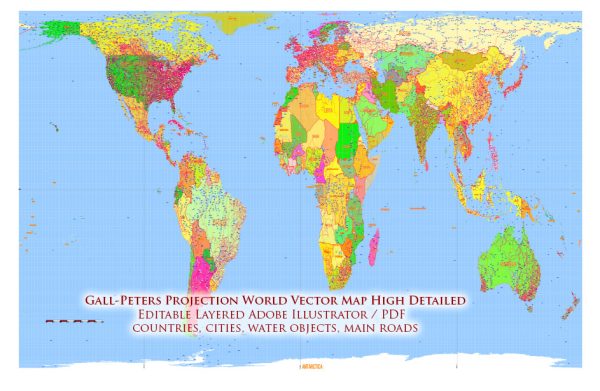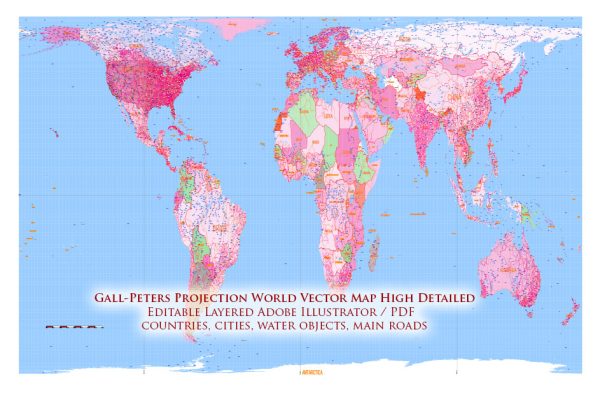The history of railroads spans several centuries and has played a crucial role in shaping the world’s economic, social, and cultural landscape. Here is a detailed overview of the railroad history:
Vectormap.Net provide you with the most accurate and up-to-date vector maps in Adobe Illustrator, PDF and other formats, designed for editing and printing. Please read the vector map descriptions carefully.
1. Early Concepts and Development:
- The concept of using tracks or grooves to guide wheeled vehicles dates back to ancient Greece and China, but the modern railroad system began to take shape in the early 17th century.
- Wooden wagonways were developed in England in the 17th century, using wooden rails for horse-drawn wagons to transport coal from mines.
2. The Birth of Steam Locomotion:
- The development of steam power in the 18th century revolutionized transportation. In 1804, Richard Trevithick built the first steam-powered locomotive, but it wasn’t until George Stephenson’s “Rocket” in 1829 that practical steam locomotion on rails became a reality.
- The Stockton and Darlington Railway, opened in 1825 in England, is often considered the first true passenger railway.
3. Railroad Expansion in Europe:
- The success of early railroads in England prompted rapid expansion across Europe. France, Germany, and other European nations quickly embraced the technology.
- By the mid-19th century, an extensive rail network connected major European cities and facilitated the transport of goods and passengers.
4. Railroad Development in the United States:
- The United States experienced a railroad boom in the 19th century. The First Transcontinental Railroad, completed in 1869, connected the East and West coasts, greatly facilitating trade and travel.
- Railroads played a crucial role in westward expansion, connecting remote areas and enabling the transportation of goods and people.
5. Impact on Industrialization:
- Railroads were instrumental in the Industrial Revolution by providing efficient transportation for raw materials and finished goods.
- The ability to transport large quantities of goods over long distances at relatively high speeds transformed industries and contributed to economic growth.
6. Global Expansion:
- Railroads became a global phenomenon in the late 19th and early 20th centuries. Countries such as Canada, Australia, India, and South Africa developed extensive rail networks.
- Railways also played a vital role in connecting colonies to imperial powers, facilitating the movement of resources.
7. Technological Advances:
- Technological innovations in the 19th and 20th centuries improved railroads. Steel rails replaced iron, and more powerful locomotives were developed.
- Electrification and dieselization further enhanced efficiency and reduced dependence on steam power.
8. Decline and Revitalization:
- The mid-20th century saw the decline of railroads in many developed countries due to competition from automobiles and airplanes.
- However, in recent decades, there has been a renewed interest in rail transportation for its environmental benefits and efficiency, leading to investments in high-speed rail and modernization projects.
9. High-Speed Rail and Modern Railways:
- Countries like Japan, France, and China have invested heavily in high-speed rail, providing fast and efficient passenger transportation.
- Modern rail systems incorporate advanced technologies such as magnetic levitation (maglev) and sophisticated signaling systems.
10. Railroads Today:
- Railroads continue to be a vital part of the global transportation network, playing a crucial role in the movement of goods and people.
- Ongoing investments in infrastructure and technology aim to make rail transportation more sustainable, efficient, and competitive in the 21st century.
The history of railroads is a rich tapestry that reflects the evolution of technology, economic development, and societal changes over the centuries. While some regions have seen a decline in rail prominence, others continue to innovate and expand their rail networks to meet the challenges of the modern world.



 Author: Kirill Shrayber, Ph.D.
Author: Kirill Shrayber, Ph.D.